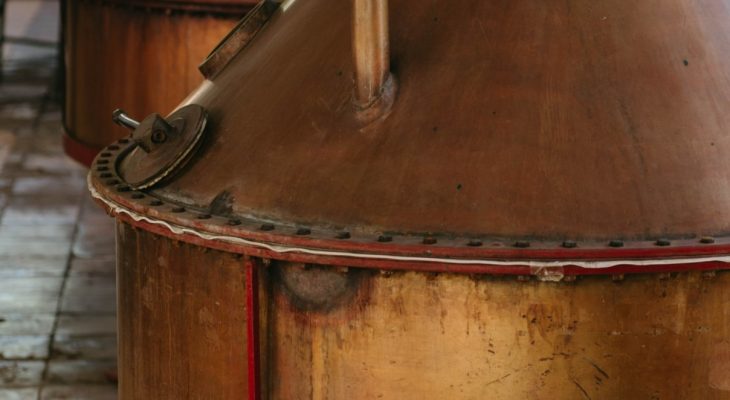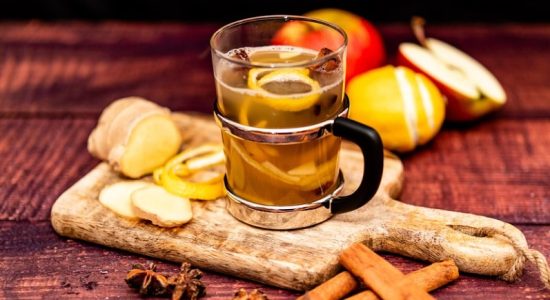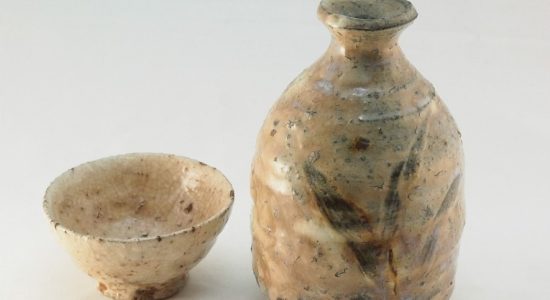How Hard Is It To Distill Whiskey? The Process Explained

Making whiskey is more of an art than simply following the cookbook. Nonetheless, it is a fascinating process, and if you’re curious about how it all works, you’ll find a detailed answer here.
It is hard to distill whiskey, but the process can be mastered with sufficient practice. To distill whiskey, you want to choose the right ingredients, malt and cook the grains, mash the mixture, let it ferment, distill, and age, and then bottle the drink.
Bear in mind that there are heavy legal restrictions regarding the distillation of alcoholic beverages at home. With that said, let’s explore the art of making whiskey and learn more about how the process works step by step.
The Process of Whiskey Distillation (Explained)
The process of whiskey distillation usually goes through seven steps:
- Choosing the right ingredients
- Malting and cooking the grains
- Mashing the grains
- Letting the mash ferment
- Distilling the whiskey
- Letting the whiskey age
- Bottling the whiskey
1. Choosing the Ingredients
The first step is to choose the grain from which you wish to make your whiskey.
There are different whiskey varieties depending on what is primarily used for the mash: barley, rye, corn, or wheat.
You can use one grain exclusively or combine different grains depending on the recipe you choose to follow. Here are some key things to know about your possible main ingredients.
Barley
Barley is the classic basic ingredient for Scotch. Single grain Scotch may contain other grain varieties (though its name might be confusing), while single malt is made exclusively from malted barley.
Malted barley whiskey features smoky flavor notes, sweetness similar to honey, and a pleasant cocoa taste.
Corn
Corn is well known as the main ingredient of bourbon, which is typically produced in the United States. While bourbon must contain at least 51% corn, there is also corn whiskey, made at least 80% from corn.
It is best, however, to add other grains to the mash, as corn is a strong source of flavor and can bring very pronounced sweet popcorn notes to the whiskey,
which wouldn’t do it much good.
Rye
American distillers favor rye as a base for whiskey.
Rye adds a pleasant flavor of rye bread with spicy overtones of mint and pepper to the whiskey taste.
Similar to bourbon, rye whiskey usually consists of at least 51% of rye with other grains added to the mash to enhance the taste and body of the drink.
Wheat
Wheat is less common as a principal ingredient but is frequently included in grain blends to make whiskey softer and gentler.
Wheat enhances the whiskey flavor with a mild honey sweetness and mint overtones and works well with other grains.
2. Malting and Cooking the Grains
After selecting the components, you must prepare them before making the mash. This process is known as malting; however, depending on the grains used, it may not be necessary.
Malting
Most grains, particularly barley, must be malted for the grain to sprout and activate enzymes that will convert starches to sugar during the mashing process.
First, the barley has to be steeped in water for two or three days.
This process stimulates enzyme activity and the development of new enzymes. Then, the grain should be left to germinate for up to seven days.
After that, the barley has to be dried to stop the germination process. The heat treating is usually performed in a kiln, but an oven can also be used.
Heat the malt at 90 to 120°F (32 to 49°C) until the germination falls off easily, which should take about 24 hours. Then, heat for three to five more hours at a higher temperature, but keep it below 150°F (70°C) so the enzymes don’t die.
Unmalted Grains
Malting is not needed for all grains. Some of them, like corn, are used unmalted but must be cooked before added to the mash.
If you already own a beer brewing kit, it can be used at this stage as the process is similar. Corn is cooked in water at a high temperature, around 165°F (74°C), to release starch. After that, it can be added to the mash with other grains, malted or unmalted.
3. Mashing the Grains
Mashing is a crucial step in the process of making whiskey. As a result of it, sugars are extracted from the grains to be later turned into alcohol.
The grains, including previously malted ones, are put into a mash tun or a large pot and boiled in water until the mixture gets thick and resembles porridge.
The mash is stirred at 155°F (67°C) for an hour and a half and then rinsed twice with water at 165°F (74°C) the first time and 180°F (82°C) the second.
4. Letting the Mash Ferment
Fermentation is the process by which future whiskey gets its alcohol. The wort is cooled to 68°F (20°C) to create comfortable conditions for the yeast, and then the yeast is introduced, which is where the ethanol comes from.
The yeast produces alcohol as it feeds on the sugars extracted in the previous step. For this stage, most brewing kits can be used as containers to host the wort.
Fermentation usually happens in two days, but the process might take a bit longer if you’re doing it at home. The result is a liquid called distiller’s beer with an ABV of 7% to 10%.
5. Distilling the Whiskey
While alcohol is initially produced during fermentation, distillation enhances the ABV, making the drink stronger.
The process requires a still, and because it can get dangerous under improper conditions, such as if the still has leaks, I would strongly advise using professional equipment for this step.
There are two types of stills widely used for whiskey distillation, and you can get either of them in a smaller size for home use.
Pot Stills
Using pot still is the oldest distilling method, which works as follows. The wash prepared during the previous steps goes into the first still, where it is heated to about 180°F (80°C), just below the water boiling point, but enough for the alcohol to evaporate.
The vapor is transported into the condenser through the still’s neck, where it becomes liquid again and goes to another still. The process is usually repeated two or three times.
When the distillation is finished, the resulting liquid will have an ABV of 60-70%. However, other compounds known as congeners vaporize along with the alcohol and can negatively affect the aroma and flavor of the whiskey or even be toxic if present in excess.
To ensure the final spirit has enough alcohol but not too many congeners, only the ‘heart’ of the run is taken, while the first and last runnings, known as ‘heads and tails,’ are discarded. Determining the right amount of liquid for the spirit is the most important part of the distillation process.
Column Stills
This method is the improved pot stilling and is most suitable for producing whiskey in large quantities. It is widely used in America and is considered the fastest and most efficient distillation method.
There are two main benefits of column stills that improve the distillation process. Firstly, they are designed to distill repeatedly and do not require cleaning between the batches, making the process much easier.
Secondly, the column stills reduce undesired compounds like congeners. As a result, the concentration of alcohol is maximized, and you don’t have to separate the liquid manually.
Here’s how column stills work. The wash is poured into the still from the top while hot steam constantly comes up from the bottom, meeting the liquid on the way.
The steam is kept at the perfect temperature to ensure it separates the alcohol vapors from other substances. The steam then pushes the vapors upwards.
As the vapors go up, they come in contact with perforated plates and condense, reducing the number of congeners and maximizing alcohol concentration.
Then, the vapors reach the condenser, resulting in the final spirit, which has a high ABV and contains a minimum quantity of undesired compounds.
6. Letting the Whiskey Age
While the grains from which whiskey is made and the previous steps it goes through influence the final flavor of the spirit, most of it comes through the aging process, also known as maturation.
If you’re making corn whiskey, aging is not an essential step. However, for most whiskey types, aging is crucial for the quality of the final product.
Whiskey does not mature in a bottle. It has to be kept in wood barrels, and how much time it spends aging, as well as what type of barrel is used, will determine the flavor qualities of whiskey.
The Minimum Whiskey Age
The minimum age that a whiskey requires to mature depends on its type. The minimum age for Scotch, for example, is three years. However, it usually needs to mature for about ten years to develop its distinct flavor and reach the premium-quality standard.
Rye whiskey ages for a minimum of two years. Four to five years is the optimum for this whiskey variety. If you see a bottle of rye whiskey at the store and it doesn’t specify the age, that means it is four years or older.
Bourbons mature similarly, with a minimum age of two years and a standard of four years or more.
The Barrel Types
After the distillation process, whiskey is devoid of color, and its flavor is not pronounced. The beautiful dark color we’re used to and different flavor varieties are gained by whiskey during its maturation.
While whiskey’s age is important, the key element that impacts the spirit’s smell, taste, and color is the type of barrel used for maturation.
Whiskey barrels are generally made of oak. American oak gives whiskey a softer and sweeter taste, while European oak brings the spice and gives strong wood notes to the flavor.
The essential factor, though, is what liquor was previously held in the barrel. The vanilla tones and tannins that whiskey extracts from the wood during aging will be too powerful if the cask is young, which is why casks used to contain other spirits are utilized for whiskey maturation.
It is also crucial that the cask wasn’t previously overused; in that case, the whiskey will lack in flavor and color. Barrel size also matters: for a smaller batch, it is best to use a small cask so that the liquid has more contact with the surface.
Bourbon Cask
A distinctive feature of bourbon is that it has to age in new casks, which makes bourbon barrels perfect for Scotch maturation.
The casks used once for bourbon cannot be utilized for the same purpose again, so they’re sold to other distillers, ensuring a plentiful and consistent supply.
The fact that the barrels held another spirit but were used just once makes them great for producing rich in taste but smooth whiskey.
Sherry Cask
Sherry was a popular drink in the 16th century, and like bourbon today, it provided a steady supply of relatively cheap barrels perfect for whiskey maturation.
Today, however, sherry barrels are harder to come across and cost much more than bourbon casks, so they are not as widely used.
Still, they can significantly contribute to the traditional whiskey flavor, adding spicy tobacco notes, a sweet taste of fruit and nuts, or a floral edge, depending on the sherry type.
Port Cask
Port is a Portuguese variation of sherry, so it’s no surprise that port casks are widely used for whiskey maturation.
Depending on the kind of port previously stored in the cask, it can have various effects on the whiskey flavor. Generally, it brings out sweetness and fruit notes but can also add some spice and dryness.
7. Bottling the Whiskey
Bottling is the final step of making whiskey. Generally, at this point, the whiskey ABV is around 40%, which can be decreased by adding water or ice. Filtration can prevent the spirit from becoming cloudy.
Usually, a bottle of whiskey is a blend of different barrels. However, you can also make a single-barrel by not mixing the spirits from multiple casks and using one single supply for each of the bottles.
Conclusion
Distilling whiskey may be a more complex process than making other alcoholic beverages. It takes considerable expertise, plenty of knowledge, and a lot of equipment, not to mention the legal right to do it. Nonetheless, it is a beautiful process that results in a sophisticated drink.






